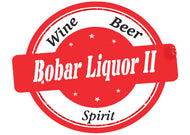Bourbon has no minimum specified duration for its aging period.[27] Products aged for as little as three months are sold as bourbon.[28] The exception is straight bourbon, which has a minimum aging requirement of two years. In addition, any bourbon aged less than four years must include an age statement on its label.[29][30]
Bourbon that meets the above requirements, has been aged for a minimum of two years, and does not have added coloring, flavoring, or other spirits may be – but is not required to be – called straight bourbon.
- Bourbon that is labeled as straight that has been aged under four years must be labeled with the duration of its aging.
- Bourbon that has an age stated on its label must be labeled with the age of the youngest whiskey in the bottle (not counting the age of any added neutral grain spirits in a bourbon that is labeled as blended, as neutral-grain spirits are not considered whiskey under the regulations and are not required to be aged at all).
Bottled-in-bond bourbon is a sub-category of straight bourbon and must be aged at least four years.
Bourbon that is labeled blended (or as a blend) may contain added coloring, flavoring, and other spirits, such as un-aged neutral grain spirits, but at least 51% of the product must be straight bourbon.
"High rye bourbon" is not a legally defined term but usually means a bourbon with 20–35% rye. High-wheat bourbons are described as more mild and subdued compared to high-rye varieties.
Bourbon that has been aged for fewer than three years cannot legally be referred to as whiskey
263 products













































































